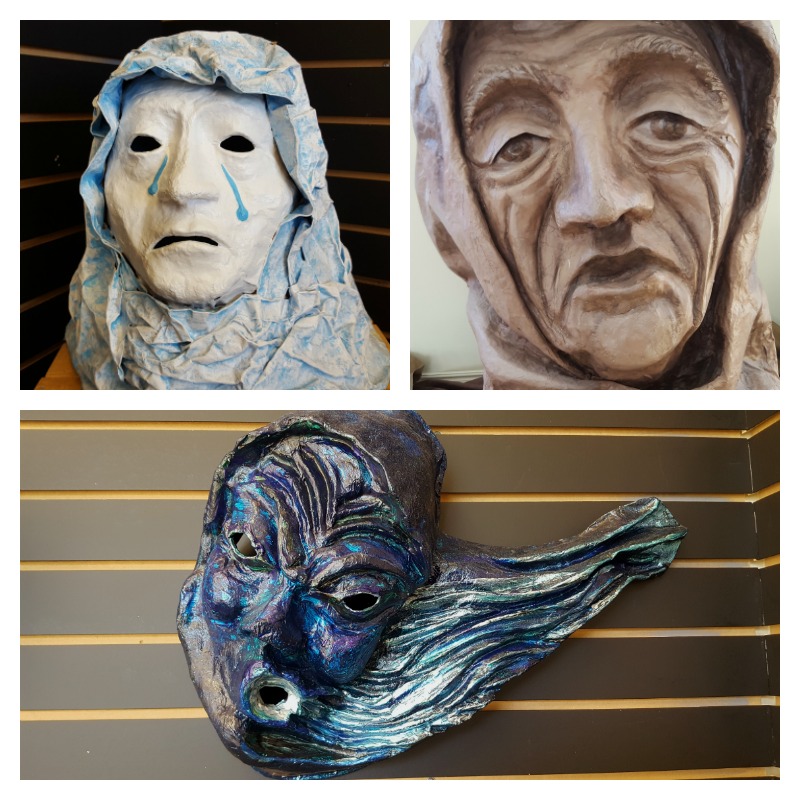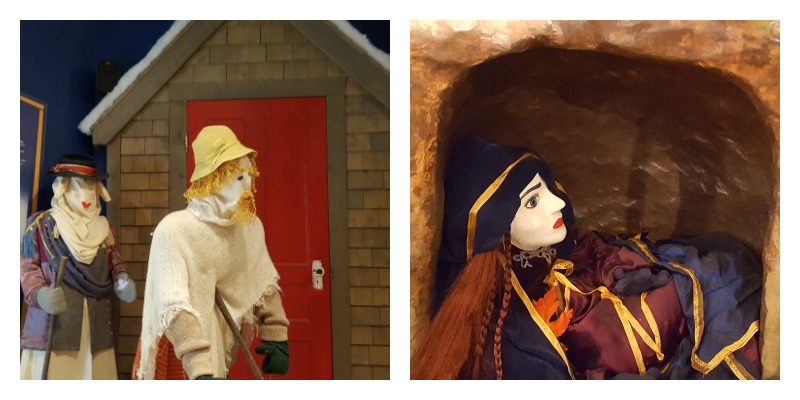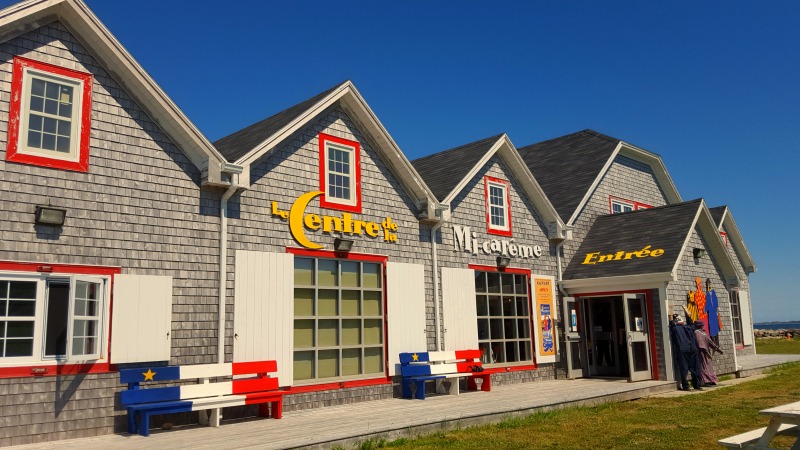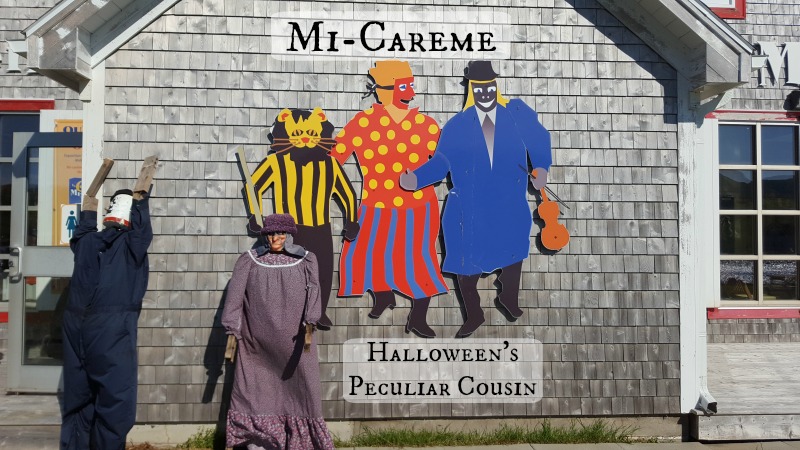You’ll be entranced by Mi-careme: a bizarre medieval tradition that is still observed in small town Cape Breton.
If you thought Halloween was the be all and end all when it comes to dress up holidays, you haven’t been properly introduced to Mi-careme (mid-Lent in French.) The medieval holiday has all but died out in most of the world, with only a few remote locations carrying on the tradition. One of those spots is on Cape Breton Island in Nova Scotia, in the Acadian town of Grand-Etang, the home of the Mi-careme Interpretive Centre.
It all stems from the difficulty some medieval Christians had following the austerity of Lent (the 40 days before Easter.) Lent is traditionally a sombre season, marked by abstaining from favourite activities and foods. For French peasants who already had rough lives, it was particularly tough.

Artful and haunting masks on display at the Centre de la Mi-careme. I think they are masks of the happiest French peasants before the holiday was invented.
So some enterprising soul came up with the idea of a break from the misery. Half-way through Lent, they would throw off the chains and party. For a week.
Whoever the mastermind was, I like their style.
There was a problem though. The Church wasn’t exactly cool with the idea of a weeklong party in the most solemn season of the year. And as necessity (ie the necessity of cake in one’s belly) is the mother of invention, the people decided they should party in disguise. Others decided they would dedicate themselves to identifying the disguised ones, and thus the mi-caremes divided themselves into two camps: the runners and the watchers.

Scenes of the “runner” mi-caremes bring to life the holiday at the interpretive centre.
The runners take special care in their disguises. They hide their faces under masks that often border on the grotesque, covering their hair and hands and altering their voices to avoid being identified. They travel from house party to house party, met at each new stop with fresh watchers looking to unmask them. If a watcher correctly names a runner, the runner must take off their mask until they leave.
In St. Joseph’s Parish the holiday inspires some serious devotion, with people travelling home to Cape Breton to celebrate and locals taking vacation days over the week of Mi-careme. It is a community holiday with watchers opening their homes to masked runners, offering food and drinks and music while they try to devise their fellow townspeople beneath the disguise. The local radio station announces the homes that will open for the revelry. It is a small town celebration that would be impossible to replicate in a city.

The Centre de la Mi-careme is set on beautiful grounds. Trust me, you’ll want to linger!
The Centre de la Mi-Careme, on the picturesque banks of the Grande-Etrang Harbour just off the Cabot Trail is the best spot (arguably in the world) to learn about the Mi-careme tradition. Enthusiastic guides will share their love of the unique holiday as they lead you through displays outlining the history and contemporary observations of Mi-Careme.
If you go: The interpretive centre is open daily in the summer months and is undertaking more programming for visitors to participate in. Try your hand at mask making and decorating! During the year they run paint nights and special events. During Mi-Careme the centre opens again as a base of operations as one of the host sites for fudge-making contests, a costume parade and all sorts of fun!




